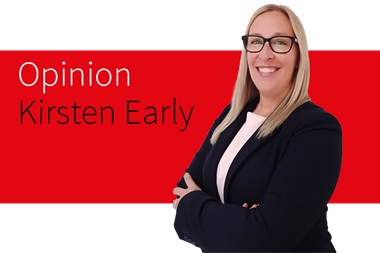Alternative risk transfer and parametric solutions can offer more than just relief from a hard market
Getting the right insurance can seem harder than ever right now. But alternative risk transfer and parametric solutions can offer more than just relief from a hard market – including more sophisticated risk management tools and even a genuine strategic business advantage.
Commercial insurance prices have gone through the roof, terms and conditions have been tightened and COVID-19 has made everything worse.
The spin-off from all this is that risk managers have become more budget conscious, risk alert and determined to look creatively at the gaps in their current insurance programmes. And for all these reasons, more and more of them are investigating what alternative risk transfer solutions (ARTs) have to offer.
With less budget available and increasing insurance prices, we could soon get to a point where traditional risk transfer is no longer the most efficient solution, according to Jan Bachmann, head Innovation Risk Solutions EMEA Swiss Re Corporate Solutions.
“Risk managers are looking for ways to optimise their self-insured retention, either via captives or virtual captives,” he says.”There are also an increasing number of corporations looking for ways to self-fund a part of their exposures.”
He summarises the principal needs and requirements of risk managers when it comes to ARTs into three main categories: the need to fill the gaps of traditional programmes with parametric or index-based insurance; the need for longer term certainty of price and capacity through structured, multi-year solutions; and the need to optimise self-insured retentions with captives and virtual captives.
“The hard market is often a trigger, but the benefits of ART solutions are valid throughout the market cycles,” says André Martin, head Innovation Risk Solutions APAC Swiss Re Corporate Solutions.
“Currently we see an uptick in demand for longer-term solutions and captives, which are mostly driven by the hard market. Depending on the product, some are more attractive during the hard market, others more during a soft market, parametric show consistent growth since the increasing efficiency of traditional insurance.”
While there will be some specific circumstances where ARTs may not be appropriate, they are broadly applicable to all sectors and lines of business.
Shift away from pure indemnity
Where parametric insurance concerned, solutions for natural catastrophe risks and weather-related solutions are the most popular options for corporate insurance buyers.
However, there is some innovation taking place with some parametric solutions for non-cat risks coming to market, for instance pre-agreed value business interruption. Meanwhile, captives are becoming more popular as a vehicle to retain emerging or hard-to-place risks, such as D&O, cyber, and extended warranties.
Ultimately, with a parametric trigger, it doesn’t matter what aspect of a business is covered within the circle – as long as it has been deemed insurable – then it is covered and the parametric policy will respond.
Paul Ramiz, director for Aon’s Innovation and Solutions team, says demand for ARTs and parametrics in particular has been “huge” over the last year.
“What we have seen over the last 18-24 months is an increased awareness and demand,” he says. “We are seeing hundreds of millions of dollars in deal flow, and I don’t think many of our clients will be going back to pure indemnity.”
Much of this growth is being driven by the efficiency benefit offered by these products.
“A lot of clients are realising that if you have an indemnity loss adjustment process for nat cat and property, it can take 18 months to settle a claim, cost millions of dollars to process, and require a huge amount of documentary evidence to support the forensic accountancy process,” says Ramiz. “All of that is removed with a parametric solution. And it pays quicker.”
“If there is a storm in 2019 and it takes until 2021 to get your pay out, that’s too late. By then you are worrying about 2020’s storms. With a parametric trigger you can write down the loss in the year of the event and move on.”
All of this means that this type of risk transfer is unlikely to be filed under ‘alternative’ for long.
“The parametric market is still in an education phase at the moment but in 20 years I think parametric triggers will be far more normal,” says Ramiz.
Key to this progression will be technical developments, but this will not be a straightforward correlative relationship between advances in tech and advances in parametric products.
While new platforms and data streams do certainly create the opportunity for more sophisticated parametric products, the data itself may not be good enough yet or cover a long enough historical time period to be applicable in all situations.
But rapid technical advances do mean we are moving towards a world where sophisticated parametric structures should, ultimately, be available anywhere.
From the tangible to the intangible
As tech gets more sophisticated, we are seeing a fundamental shift from heavy assets to light assets and businesses increasingly deriving their revenues from intangible assets.
“This development is fuelling the demand for new solutions – and parametric insurance has proven to be a very powerful solution for such intangible assets,” says André Martin.
Captive insurers are not only offer more affordable capacity more widely in many instances, they can also give a long-term strategic advantage.
By allowing companies to take on appropriate corporate retentions, they are also a useful risk management tool through which to collect data and better understand risk.
It is easier for an insured to have a credible conversation with an insurer when they themselves will be sharing in the financing of that risk with them – and captives are a great way of doing that.
In a hardening market in which the majority – if not all – insurers are pushing for rate, insureds may get to a point where they feel that they’re no longer getting value for money and this is when they might consider using a captive as a means of offsetting rate increases.
“A captive offers a reassuring safeguard in that, no matter how challenging market conditions are, you always have that option to retain the risk,” says Owen Williams, Global Programme & Captive director, UK & Lloyd’s, at AXA XL captives.
Think ahead
While ARTs promise to simplify the claims, they can be complicated to design and it’s vital to get the initial development stages right.
The key to success is to think ahead. Buy early. Don’t rush. Take your time – and certainly don’t just rush in when you can’t get capacity elsewhere.
“Tread carefully, seek good advice and set expectations appropriately,” says Simon Young, senior director at Willis Towers Watson. “ART is not a silver bullet, but for a creative and innovative risk manager, ARTs should be part of the conversation, and will often end up being a critical, and flexible, part of the solution.”




















No comments yet